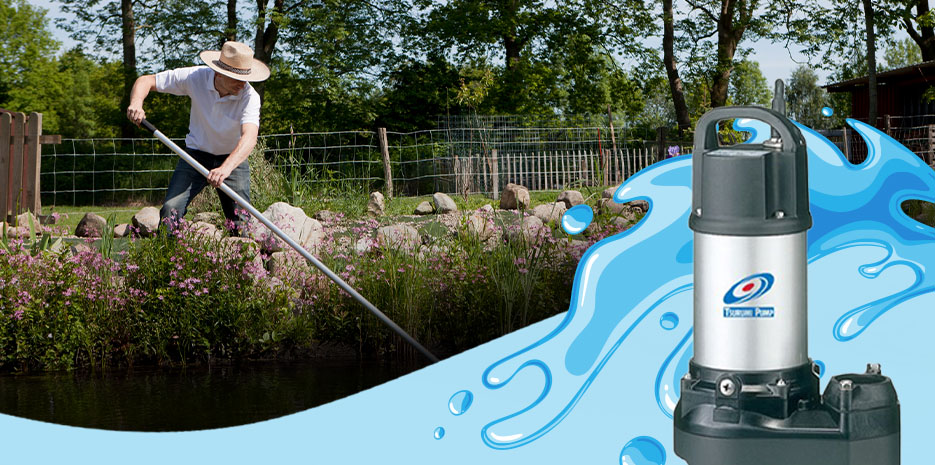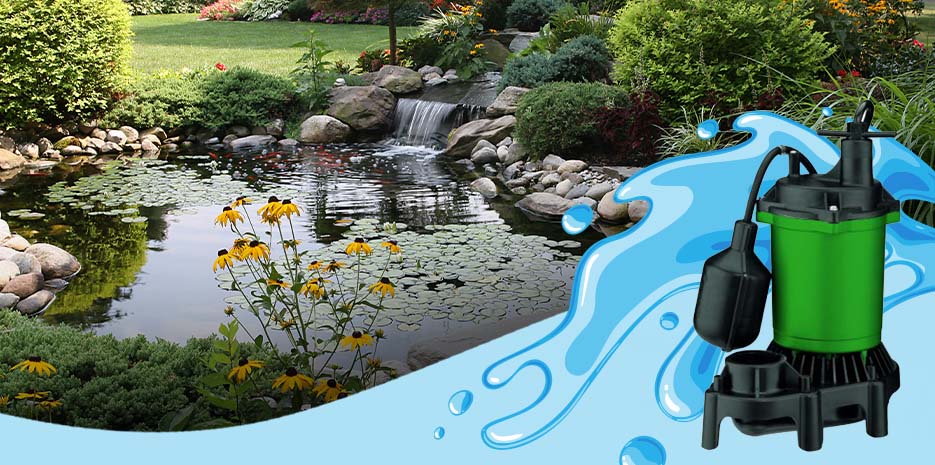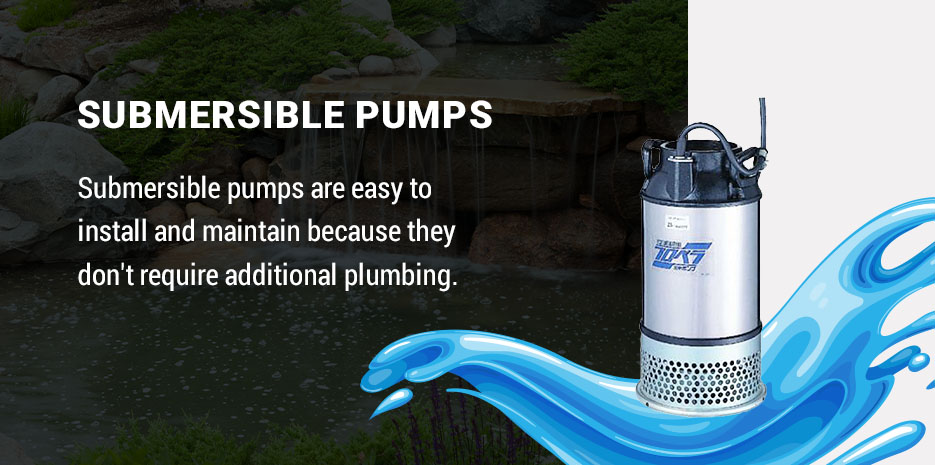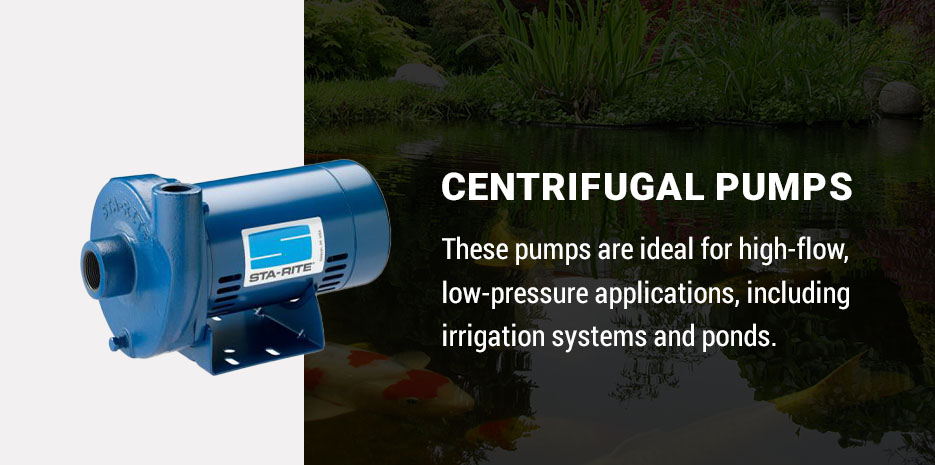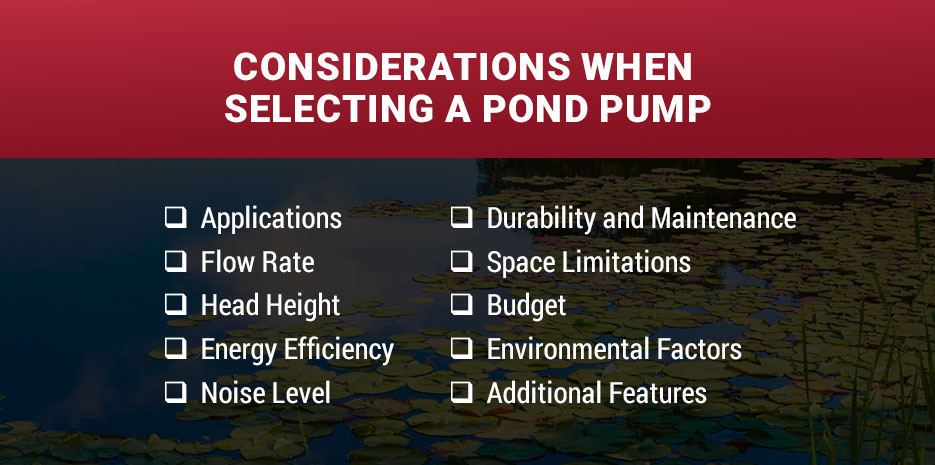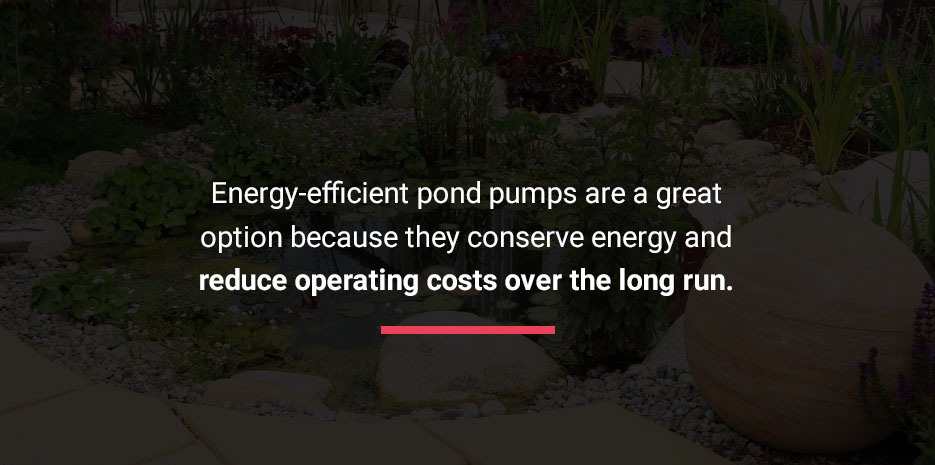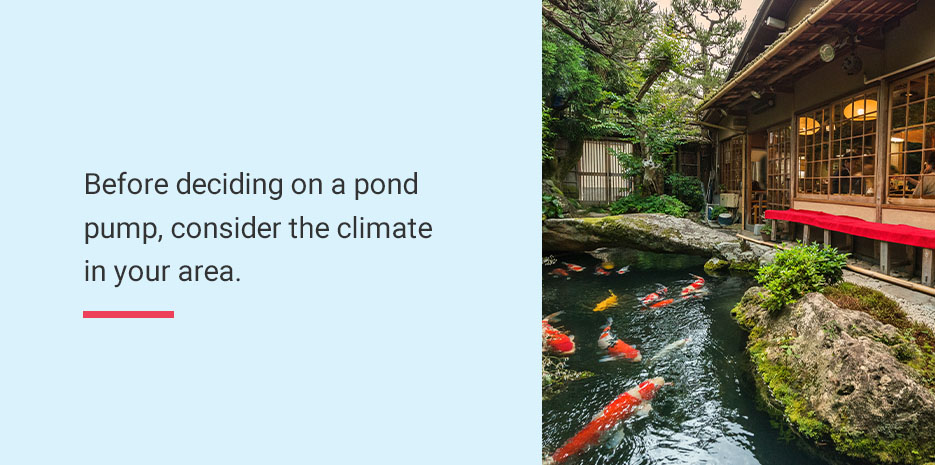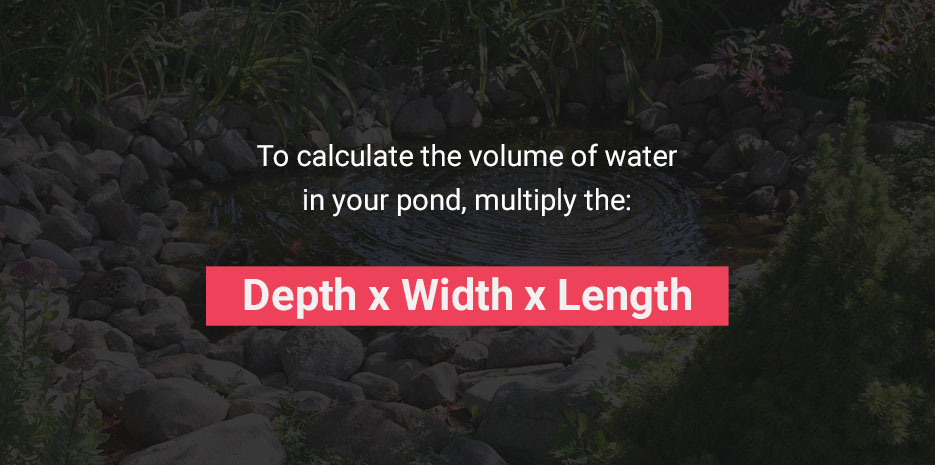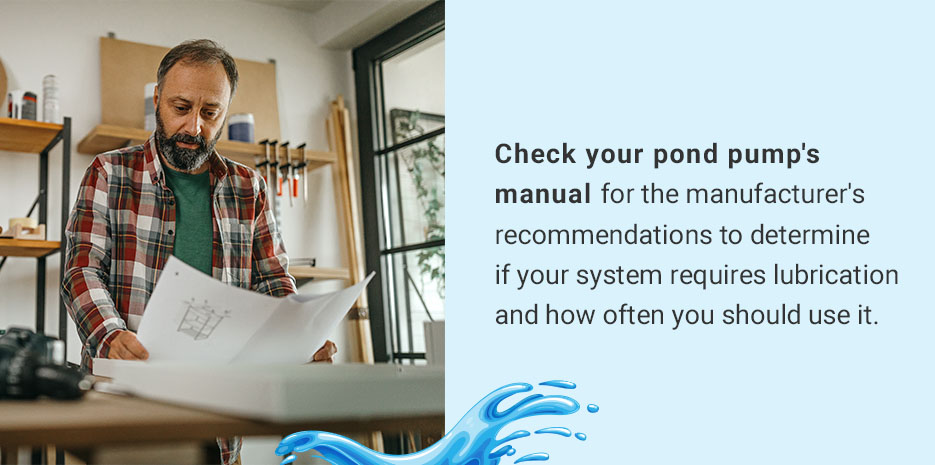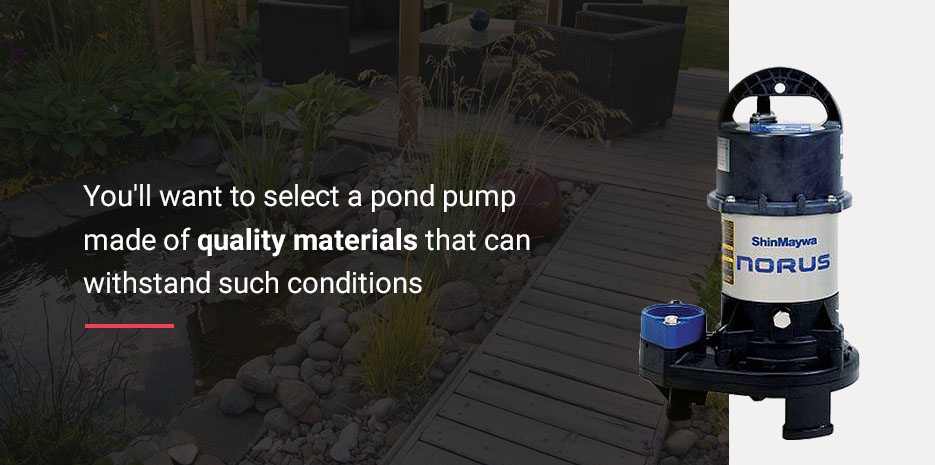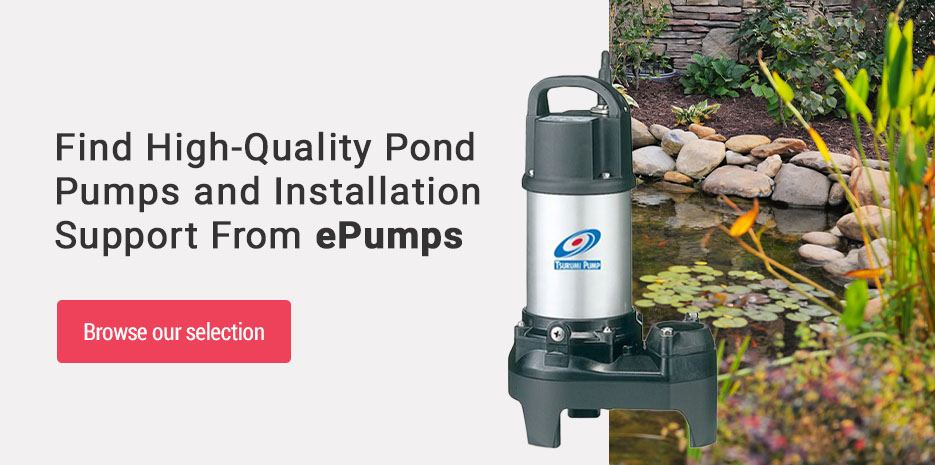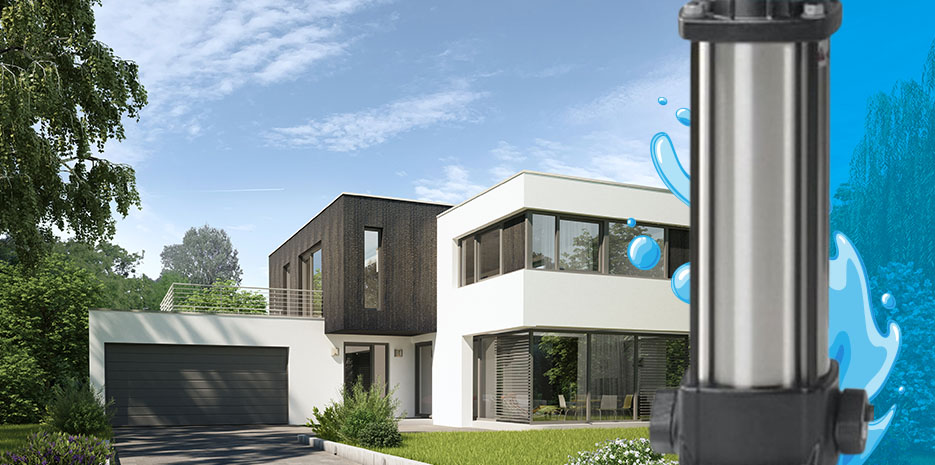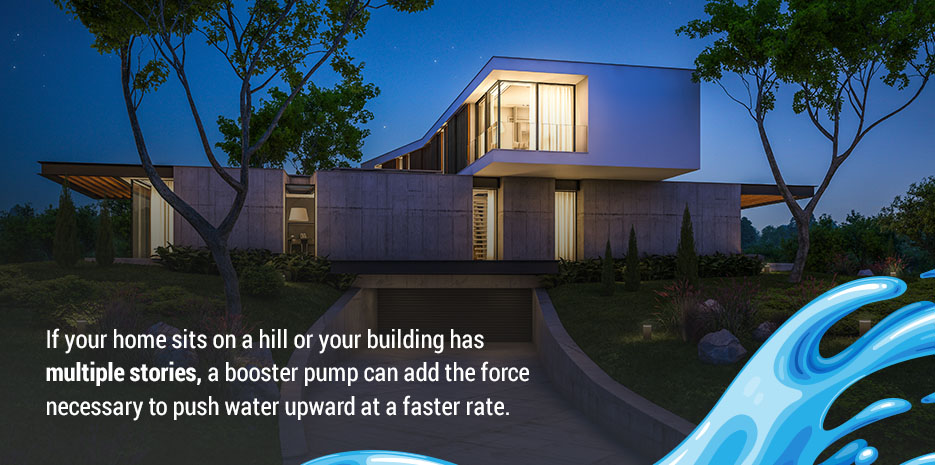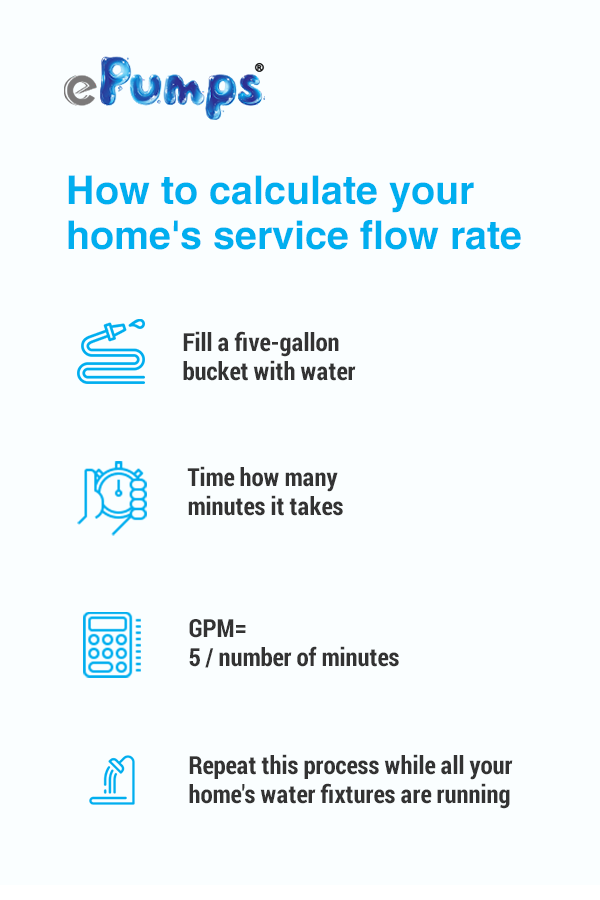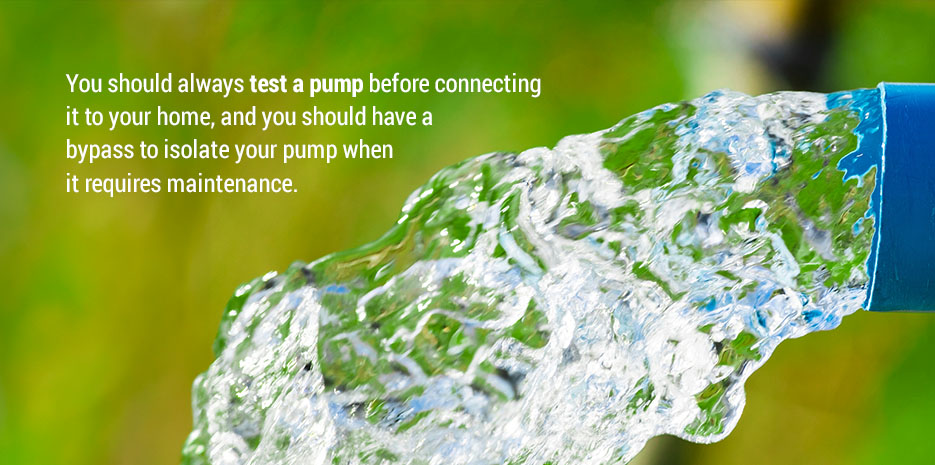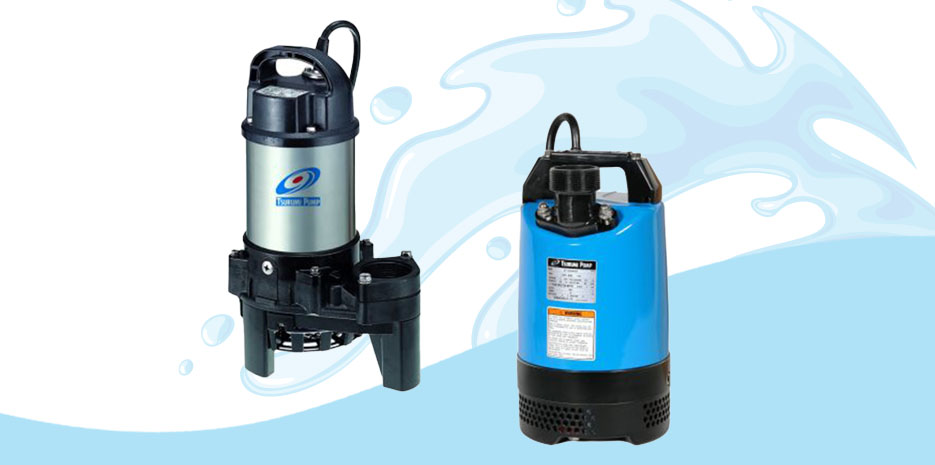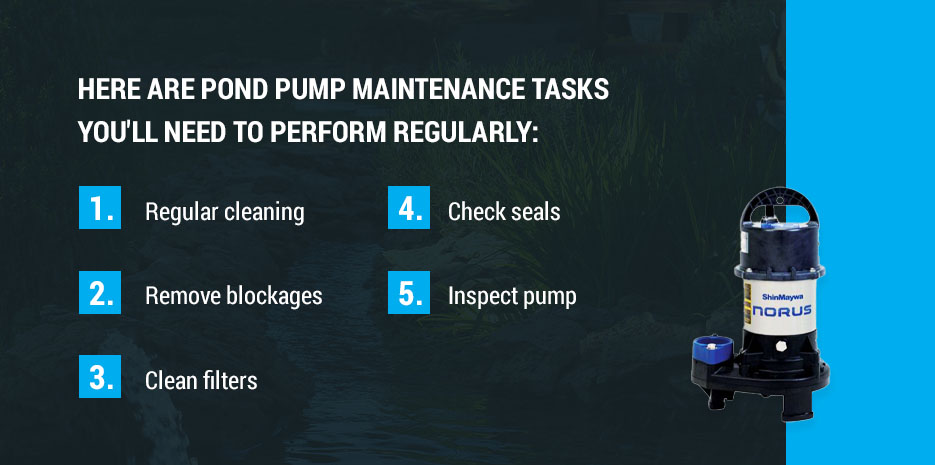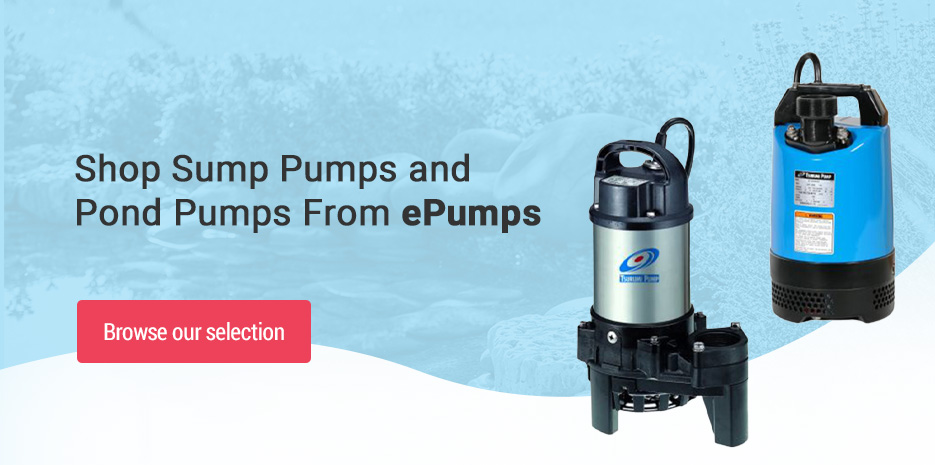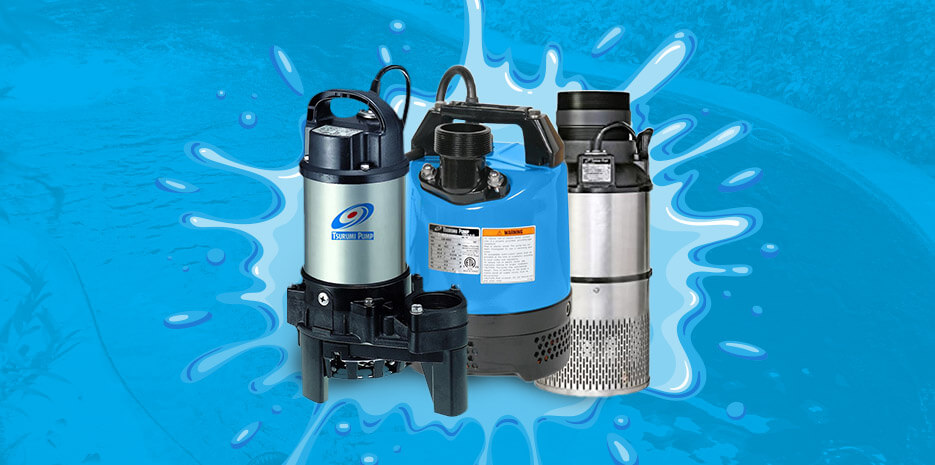Pond Pump Troubleshooting
- By Eli Weinstock
- Apr 9, 2024
Pond pumps keep your water clean and moving, preventing algae buildup and protecting the pond's ecosystem. These essential pond components work hard to make sure your pond is healthy and looks great. As a result, paying attention to your pump's operation is the key to a beautiful pond.
While regular maintenance helps prevent problems with your pump, issues can still arise for a variety of reasons. Knowing how to fix your pond pump helps you keep it working for its full life span. Save money by reducing sudden repairs and ensure your pump stays in good condition with these pond pump troubleshooting tips.
Common Pond Pump Issues
Your pond pump runs regularly to ensure your pond is healthy and balanced. This continued use and water exposure can result in wear and tear issues, preventing your pond pump from working effectively. Taking the time to understand pond pump issues will help you know what to look out for. Once you start noticing problems, you can fix them early, preventing long-term damage.
1. Leaking
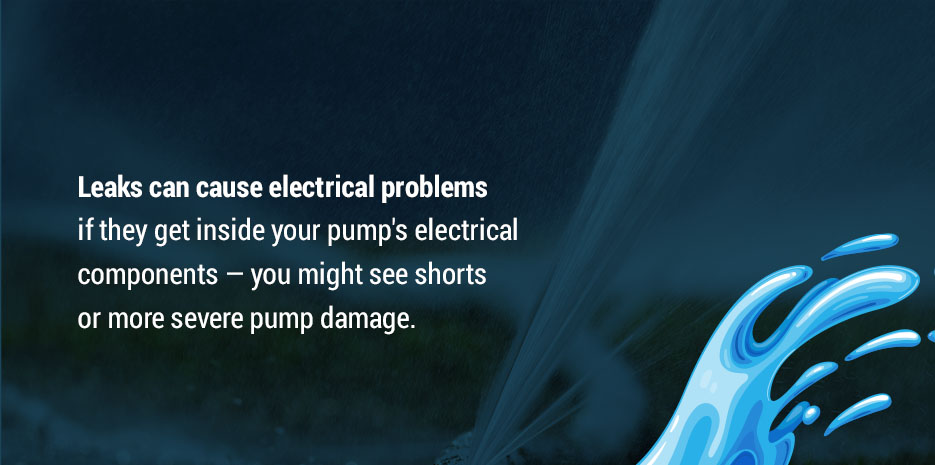
If you start to see water spraying from or dripping out of your pump, you probably have a leak. Leaks usually happen when a pump's seals become damaged or worn out. Without a tight seal, water coming into the pump will leak from different areas. Leaks can cause electrical problems if they get inside your pump's electrical components — you might see shorts or more severe pump damage. Additionally, leaks waste water, increasing your water expenses when unfixed.
2. Low Water Levels
Low water levels are another pump problem that can pop up. When your pond's water levels drop too low, it can lead to pump damage. Your pond pump needs a steady amount of water to prevent overheating, damage and burnout. Sucking in too much air will lead to further pump issues. Low water levels will also affect your pond's health — your pond ecosystem needs a certain amount of water to maintain normal conditions.
3. Clogging
Clogging is one of the most common pond pump issues. Ponds see lots of element exposure, so it's common to see leaves, twigs and algae build up in the water. Your pump can suck in this debris, eventually clogging up when too much gets inside. With a clog blocking the pump, it has trouble working properly. Clogs prevent the filtration and pumping mechanisms from working, leaving you with poor water quality.
4. Air Lock
Air locks happen when air gets trapped inside your pump. Air usually passes through the pump easily, but sometimes, a big enough air bubble will find its way in. When this happens, the pump has trouble getting the water moving because there's air blocking the way. Having your pump suck in air instead of water means your pond won't get the nutrient distribution and filtration it needs.
5. Electrical Problems
Like any electrical system, your pond pump might have electrical problems occasionally. Electrical issues can come from problems with the wiring, power supply, water intrusion or electrical components. Power supply problems, like a blown fuse or tripped circuit breaker, will stop the pump from getting the electricity it needs. If the pump's electrical components are causing the issue, it can completely stop working.
6. Pipe Blockages
While clogs are one type of potential pip blockage, there can also be kinks in the pipes, leading to blockages. Any restriction on the pump's water flow will make the pump work harder than it should. As a result, it can experience breakdowns.
7. Impeller Damage
A pond pump impeller is essential for pushing water through your pond pump system. Debris or general wear and tear can cause impeller damage, leading to pump problems and ineffective water movement. With poor water movement, you'll see reduced water flow or even pump failure.
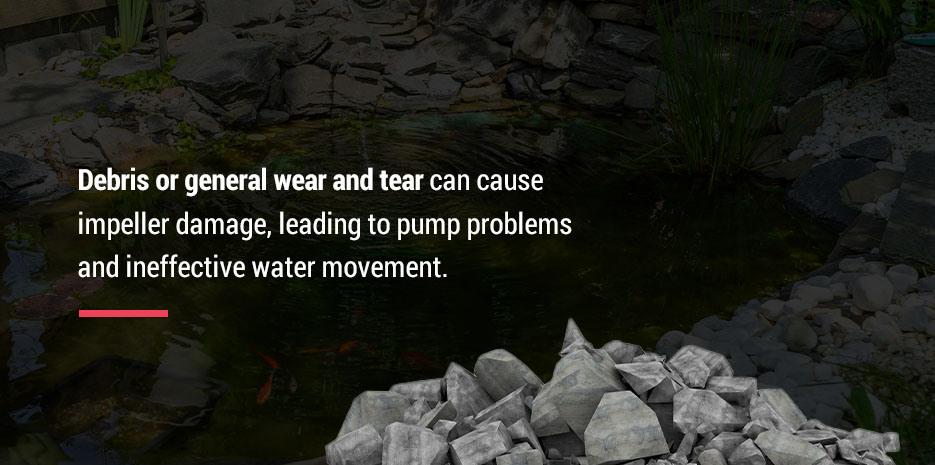
8. Overheating
Overheating is another issue you might see with pond pumps. If you leave your pump on all the time, or it doesn't have enough water flowing through it, you can end up overheating your pump. Eventually, the heat causes your pump to stop working, and you might see some damage or even a full breakdown.
How to Fix a Broken Pond Pump
If you're dealing with pump issues, you need to fix them as quickly as possible. The longer you leave a pump issue, the worse the damage can get. You might end up needing a completely new pump, or your pond ecosystem can start experiencing problems.
Try these steps to help fix your pond pump:
- Find the problem: Before you start any repairs, you need to find out what's causing the issue. Look over the pump for common problems like electrical failures, leaks, clogs or air locks. Assess components for signs of wear or damage. Once you find the problem area, you can begin to make the necessary repairs.
- Clean the pump: If you're dealing with a clog, you'll need to clean out your pond pump. Use a net, brush or your hands to carefully clear out the debris blocking the pump — make sure to wear gloves if you want to use your hands. You should also clean the impeller, intake and housing thoroughly to ensure you've got good water flow once again.
- Replace seals: A leaky pump usually means a seal issue. Replace any seals that look worn out or damaged. With new, secure seals, you shouldn't see any leaks.
- Check electrical components: Pump problems might come from electrical component issues. Look over the electrical connections, power cord and plug for wear or damage. If you see any loose connections, frayed wires or corroded plugs, you'll need to replace them. Double-check the pump to make sure it's properly grounded and there are no exposed wires around.
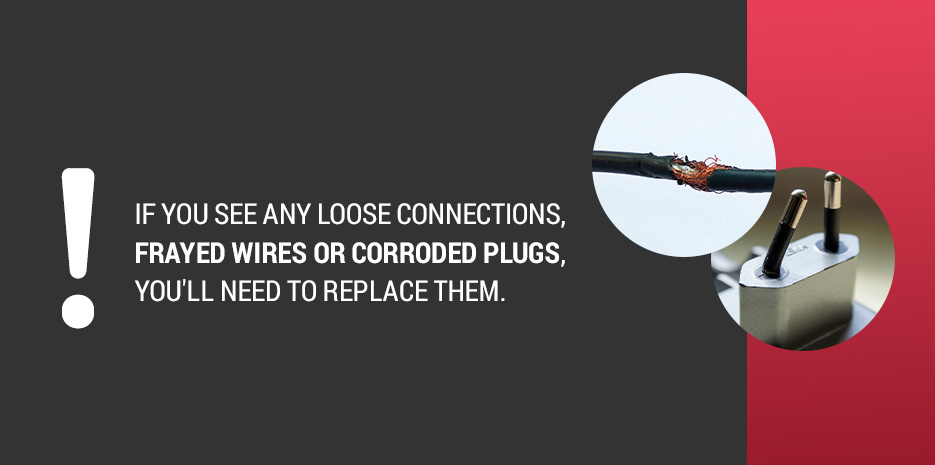
- Prime the pump: If your pump has lost its prime or you're seeing water pumping problems, you might need to manually prime it. Fill the pump chamber with water until it's completely submerged to remove any air locks. With the pump full of water, it should be able to start working correctly again.
- Replace damaged parts: If you spot any worn or damaged components, you'll need to repair or replace them. Worn out parts will cause your pump to work harder and inefficiently, wearing it out early. Keeping its parts in good condition with repairs and replacements helps keep it working smoothly.
- Test it out: Once you've made your fixes, you need to test out your pond pump. See how it performs and make sure there aren't any more problems. You might need to monitor it for a couple of days to ensure everything is working smoothly.
- Maintain the pump: After you've fixed the problem, stay on top of your pond pump maintenance to help prevent future issues.
Pond Pump Maintenance Tips
You need to invest in proper maintenance to prevent your pond pump from breaking down or keep it in good shape after you fix it. A pond pump fix will only work temporarily if you aren't keeping up with maintenance. Additionally, good maintenance will save you money on repairs and maximize your pond pump's life span.
Follow these maintenance practices to help keep your pond pump in good shape:
- Clean regularly: Regular cleaning is essential for preventing common pond pump problems. Debris from the pond will work its way into your pump, causing clogs and performance issues. Regularly clean your pump and the surrounding area to help prevent debris from causing trouble. You can use a skimmer or net to clear floating debris from the water. You can also check the pump housing for buildup occasionally.
- Inspect the intake: The intake is where your pump draws all the water in. Look at the intake regularly and clean out any buildup or debris you find to improve your pump's efficiency.
- Check water levels: Make sure your pond's water levels stay at the right height. Evaporation, leaks and even splashing can all lead to low water levels. Top up pond water levels as needed to protect your pond's health and prevent pump damage.
- Clean filters: If your pond pump is connected to a filtration system, you'll need to clean and replace the filters regularly. Filters help catch sediment, particles and debris, preventing them from clogging the pump. Over time, they'll get full and become ineffective. You might need to replace or rinse filter sponges, cartridges or pads to keep everything filtered properly. Follow the pump manufacturer's instructions and maintain the filters to protect your pump and pond.
- Replace seals: Your pump's gaskets and seals help prevent water leaks, making your pump run efficiently. Seals can degrade over time, leading to leaks, water loss and poor pump performance. Look at your pump seals regularly for signs of wear, like cracking or deterioration. If you notice any damage or leaks, replace the seals quickly to prevent further damage. You should also lubricate the seals according to your manufacturer's instructions to prevent early failure and extend their life span.
- Look at the electrical components: Damaged or frayed electrical parts can prevent your pump from working correctly. Exposed electrical components can also be dangerous, harming you or any wildlife that comes into contact with the exposed section. Make sure you carefully look over your pump's electrical components. If you notice any electrical issues, contact a professional immediately to avoid harming yourself or creating more hazards by attempting to fix things yourself.
- Stop freezing: If you live somewhere that experiences freezing weather, you need to protect your pump against it. Freezing water sits in your pump's internal components, leading to pump malfunctions. You can move your pump to deeper water to avoid freezing, or you can invest in a heater to stop freezing from happening. Additionally, you can insulate your pump and its housing to keep the cold out.
- Watch pump performance: Finally, make sure you're monitoring your pond pump's performance so you can catch any problems early. If you start to know any unusual vibrations, noises or water flow rates, you might have a pump problem. Looking after your pump performance lets you proactively stop problems before they become expensive repairs.
Signs You Need a New Pond Pump
While regular maintenance and quality repairs will keep your pump working long-term, you'll need to replace your pump eventually. Every pond pump has a set life span — once they reach this life span, investing in a new one can help improve your pump efficiency and reduce costs. Keep an eye out for these signs so that you know when it's time to get a new pond pump:
- Frequent repairs: If you're constantly repairing your pump, it's a sign you should probably get a new one, no matter its age. Dealing with frequent repairs means you're spending lots of money and time on your pump, and replacing it with a new one can save you both of those things in the long run. Getting a new model will help you avoid frequent repairs while boosting pump efficiency.
- Lots of noise: If your pump is making unusual noises constantly, you might need a new one. Squeaking, grinding and rattling are all noises that usually mean you have a pump problem. Check out these sounds and see if you can fix them, or if it's time for a new pump.
- Leaks: While you can fix most leaks with new seals, many leaks over an extended period can cause permanent pump damage. With extensive leak damage, it might be more cost-effective to invest in a new pump rather than continue sealing leaks.
- Poor water flow: If you're still seeing reduced water flow after trying cleaning, repair and maintenance, it might just be time for a newer, more efficient model.
- End of life span: Once your pond pump starts getting old, you'll want to start looking at new options, especially if issues begin popping up more often. Make sure you get the correct pump size for your pond to ensure maximum efficiency.
Buy a Reliable Pond Pump at ePumps
Get quality, lasting pond pumps from ePumps. As a leader in the pump industry since 2014, you can count on us to provide you with reliable and effective pond pumps for your pond. From pond pumps and other submersible pumps to well pumps, pressure pumps and more, we're your go-to source for pumps and pump accessories.
At ePumps, we're committed to delivering the very best in pumps and accessories. Our team is dedicated to providing the best possible customer experience — with 24/7 customer service, you can always get the product support you need. Choose from our extensive range of pumps and experience unmatched performance every time.
Shop with us and enjoy free shipping, hassle-free returns and competitive pricing with every ePumps order. Take your pond experience to the next level when you shop ePumps today!

